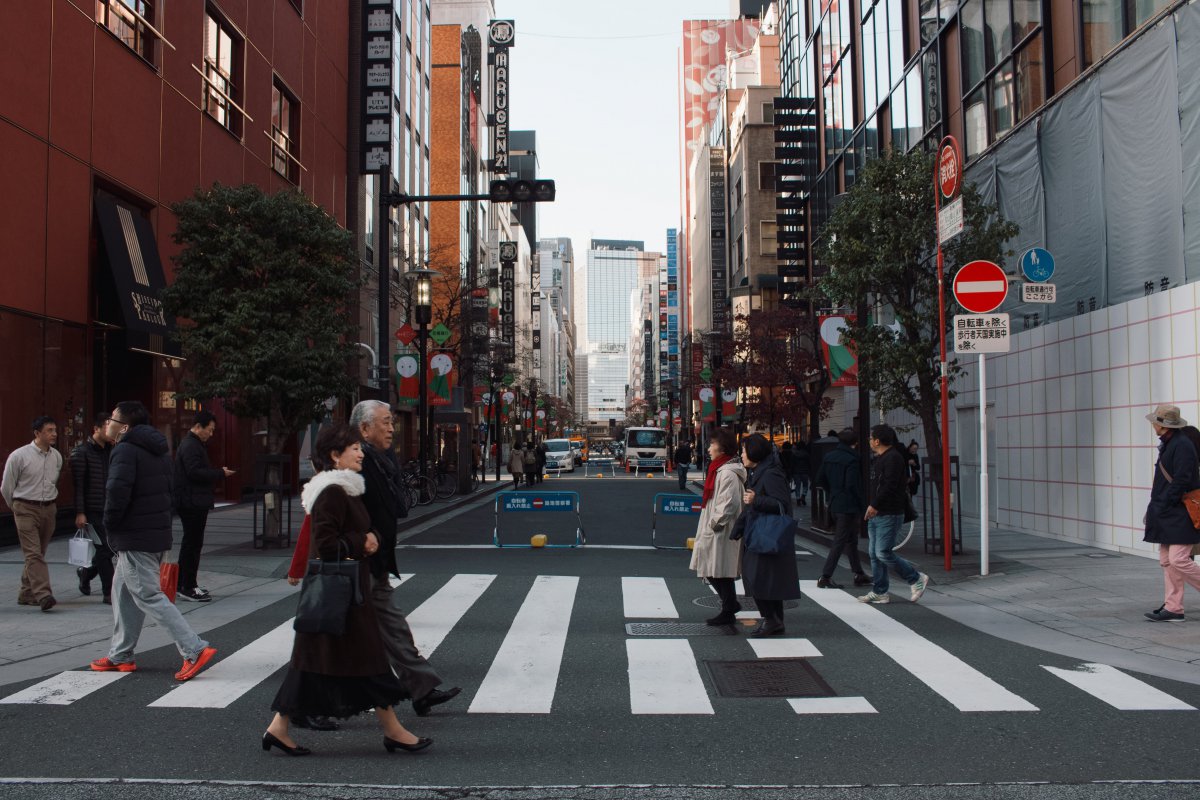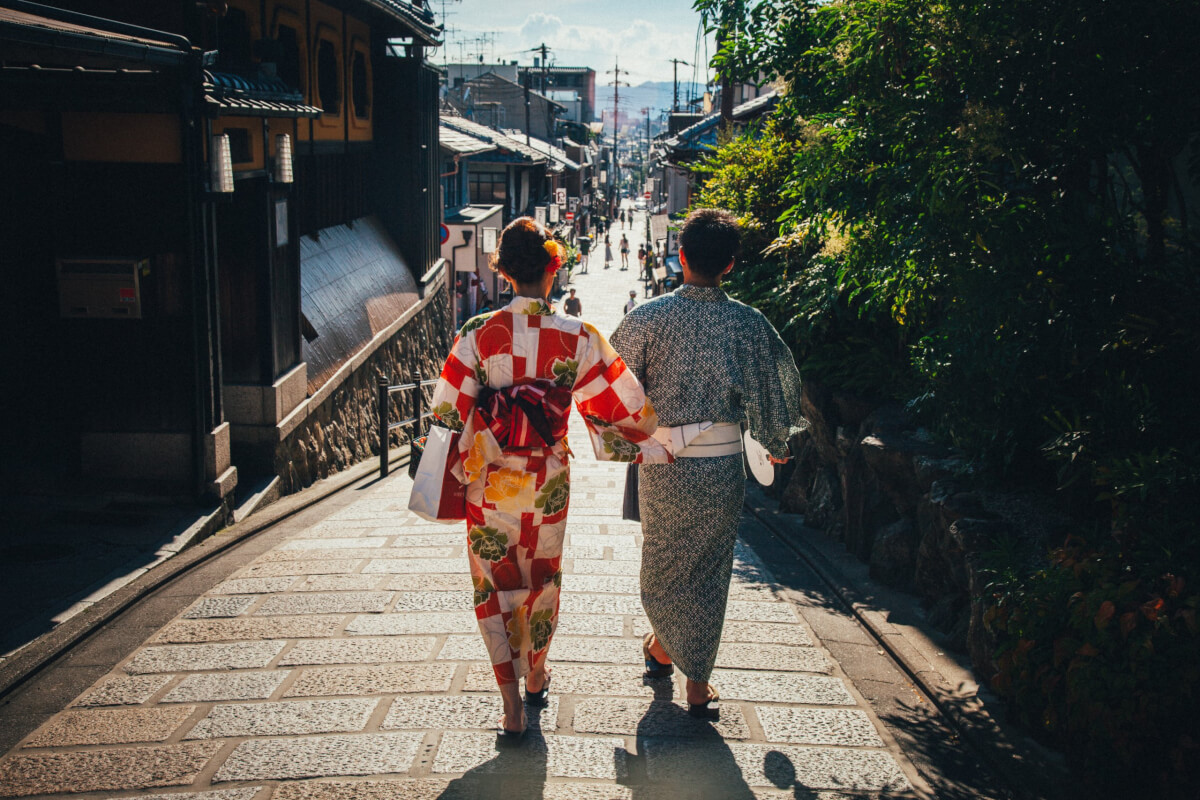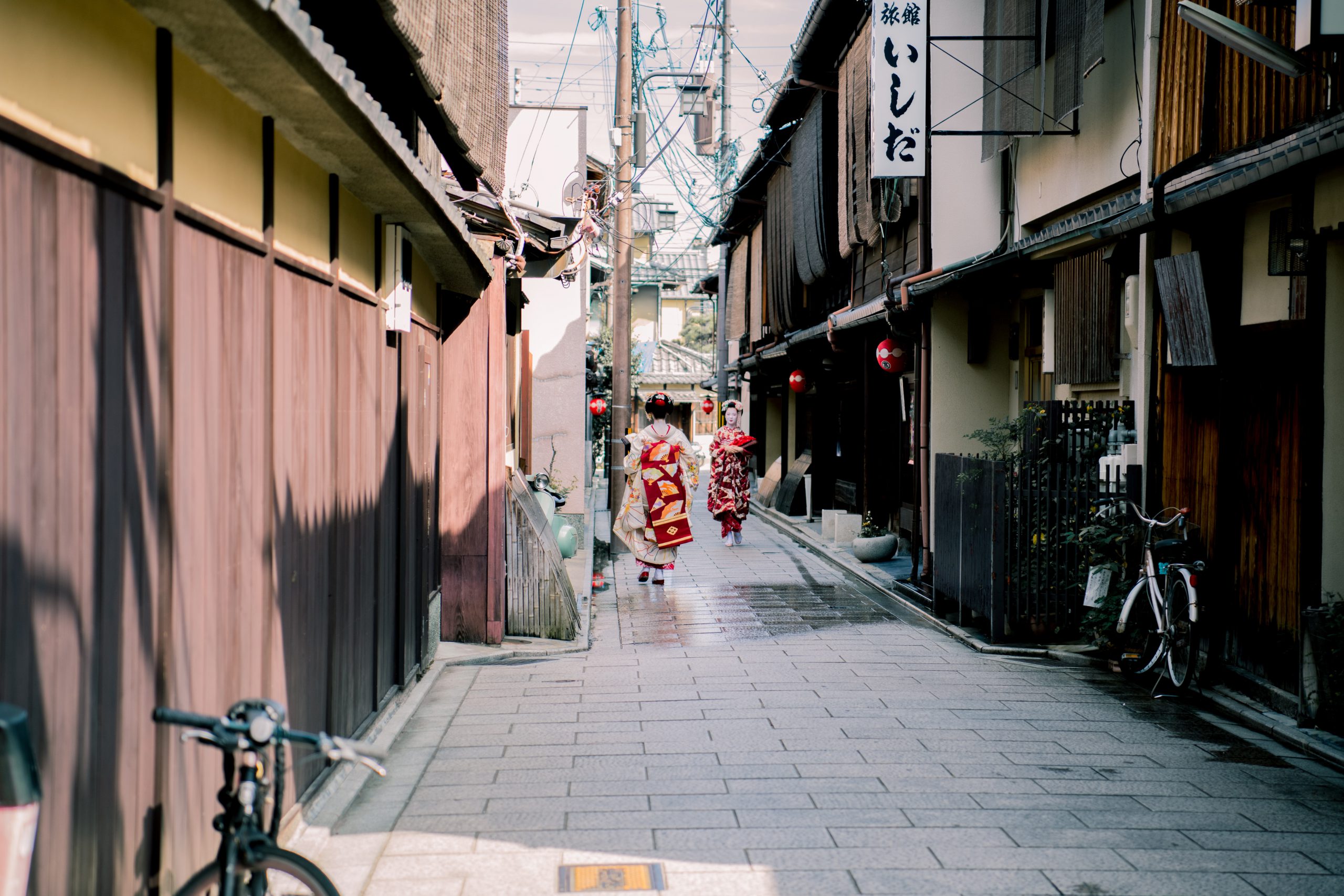When you travel to Japan, many questions about Japanese culture and people’s behavior may pop up. Before you travel abroad, it is better to learn the basic cultural differences and it helps you get ready for your trip and allows you to enjoy your stay more! In Japan, there is a number of unique cultures and customs that you should know in advance.
“Why Japanese people do that?” In this article, we answer those major questions you will likely encounter during your trip in Japan.
- 1. Why is it so quiet on the train?
- 2. What is the difference between shrines and temples?
- 3. Why do you have to take your shoes off at home/restaurants?
- 4. Why are there only a few trash cans in Japan?
- 5. What is the difference between hot and cold sake?
- 6. What is Kanji?
- 7. Why Japanese people often bow?
- 8. Why Japanese people are so kind?
- Japan Wonder Travel Tours
- Read more travel tips in Japan
1. Why is it so quiet on the train?
In Japan, it is considered rude to make some noise or speak loudly on the train. People keep quiet and be mindful of others so that everyone can enjoy a comfortable ride. In general, Japanese tend to avoid disturbing others, and it is a typical example of this unique culture. It is one of the most important manners that you should know, especially when you use public transportation not only trains, but also buses where you need to share the same space with others. You should avoid calling on the phone and turn it into the silent mode when you use public transportation. You might be surprised how people stop talking when they get in the elevator too!
2. What is the difference between shrines and temples?

Shrines and temples are one of the most popular tourist attractions in Japan. They might look similar, but the origins and meaning are totally different. Shrines belong to Shintoism, which is the indigenous religious belief of Japan. It is said to be as old as the country itself, and worships the spirits living in nature. Shrines consist of iconic structures and can be easily recognized by the Torii Gates that are generally painted in red and stand at the entrance.

Temples belong to Buddhism, and they typically place Buddha statues which serve as a visual imagery of Buddha. It is not indigenous in Japan, but originated in China and India. There are monks who practice hard asceticism and perform religious training. Most Japanese funerals are held in the Buddhist style as well.
There is a lot more to know about them, but the basic information above will help you visit each of them with different perspectives!
3. Why do you have to take your shoes off at home/restaurants?
In short, it is simply for the reasons of hygiene. Japanese take off their shoes before entering a home in order to keep the floor clean. It is also deeply associated with their lifestyle as they sit on the floor directly, and sleep in Futon which is usually laid on the floor. In addition, because of the hot and humid climate in summer, Japanese houses tend to hold the humidity inside which could cause damage to the wooden floor and Tatami, a traditional Japanese mat made of rice straw. Walking around a house with your shoes on could make the situation even worse.
In restaurants, it depends on the restaurant whether you need to take off your shoes or not. When you choose “Zashiki”, a Japanese traditional seating room covered with Tatami, you have to take off your shoes to protect it from damage.
4. Why are there only a few trash cans in Japan?
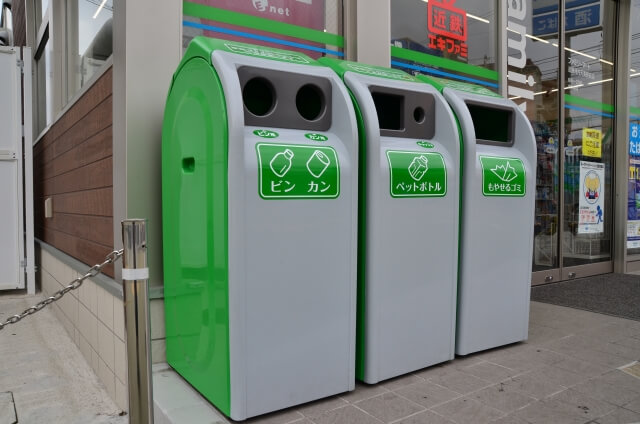
Japan is known as one of the safest and cleanest countries in the world. Did you know that it is partly because of the limited number of trash cans that can be found in cities? Some tourists complain that they can hardly find public trash cans while walking around the country, but it has good reasons. It is for security reasons which prevent terrorists from hiding explosive items in trash cans. It also encourages people to take their trash back home and dispose of it by themselves. Littering is strictly prohibited, and most people are aware of the importance of being responsible for their own trash.
5. What is the difference between hot and cold sake?
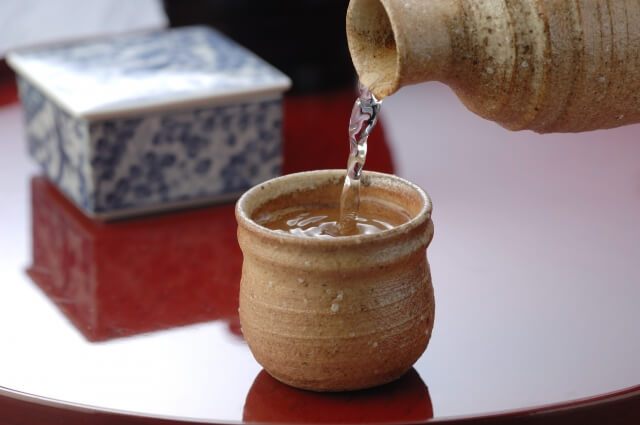
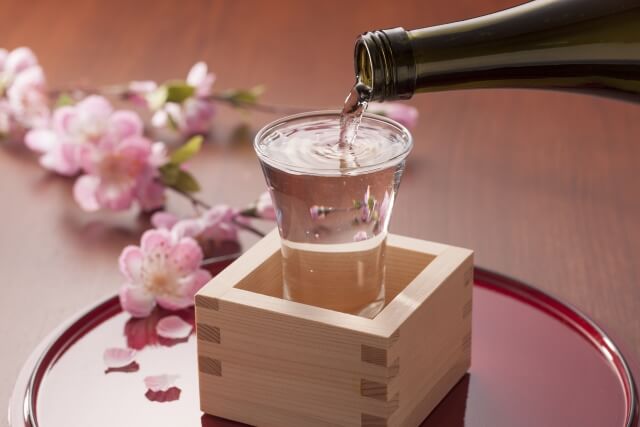
In Japan, people enjoy Japanese Sake at different temperatures. The flavor and taste vary depending on the temperature, which offers a variety of experiences! In the old days before the refrigerator was invented, people generally enjoyed hot sake or at regular temperature. When the temperature is relatively high around 30 to 55 degrees, the flavor gets stronger with a rich taste. Cold sake, on the other hand, is suitable for those who prefer smooth flavor and refreshing taste! There is no particular rule to enjoy sake, so find your favorite way to try sake at different temperatures!
6. What is Kanji?
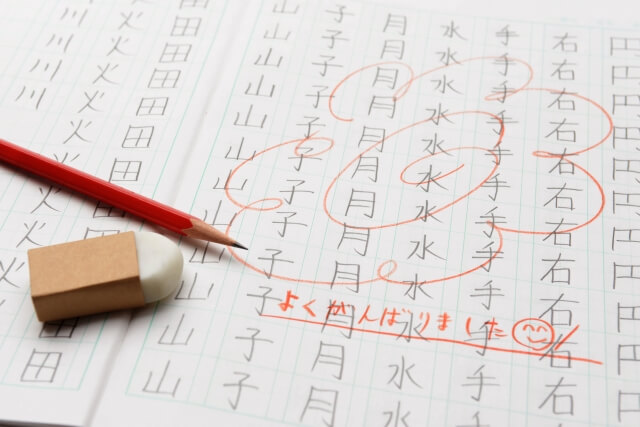
Kanji is one of the main characters used in Japanese writing. There are three types of characters in Japan; Hiragana, Katakana, and Kanji. Kanji is originally from China, and Japanese added some original Kanji later. Kanji generally consists of a number of strokes. You need to follow the stroke orders to write them correctly. Each Kanji has several pronunciations which consist of “On-yomi” and “Kun-yomi”. On-yomi comes from China, and Kun-yomi originates in Japan. Sometimes people ask if Kanji in Japanese and Chinese are the same, but even though Kanji originally comes from China, how to read and how to write Kanji are different between Japanese and Chinese. So Japanese people can guess the meaning but can’t completely understand or pronounce Kanji in Chinese.
There are over 50,000 Kanji in total and the regular-use Kanji is over 2,100 Kanji. In Japan, people learn all the regular Kanji for 9 years from elementary school to junior high school.
7. Why Japanese people often bow?

Bowing is a respectful way to show your appreciation or apology. In business, it is a common behavior to build a better relationship and make your business successful. You will see people often bowing at the restaurants or department stores to show a welcoming posture. Other than that, Japanese people often bow when they need to be humble or greet someone in a daily life. In most cases, they do this without thinking as it is quite natural for them to bow even when it seems too much for international travelers!
8. Why Japanese people are so kind?

In general, Japanese people are taught to be thoughtful and respectful to others. They put emphasis on harmony and peaceful relationships, and try to avoid conflicts as much as possible. In addition, there is a famous Japanese word “Giri and Ninjo ” which refers to sympathy and compassion to others. It is widely considered as one of the most valued concepts which is essential for better human relationships. On the other hand, it also has a negative aspect as they are not good at coming up with innovative ideas through discussions. However, they are proud of this national character and always welcome tourists with heart warming hospitality!
Japan Wonder Travel Tours
If you need some help to organize your trip to Japan, you should definitely check out our private tour including English guide. We’re glad to help you make your trip to Japan a safe, comfortable, and unforgettable memory!
- [ONLINE] Tokyo Virtual Highlight Tour
- Tokyo 1-Day Highlights Private Walking Tour
- Kyoto Private Full Day Walking Tour
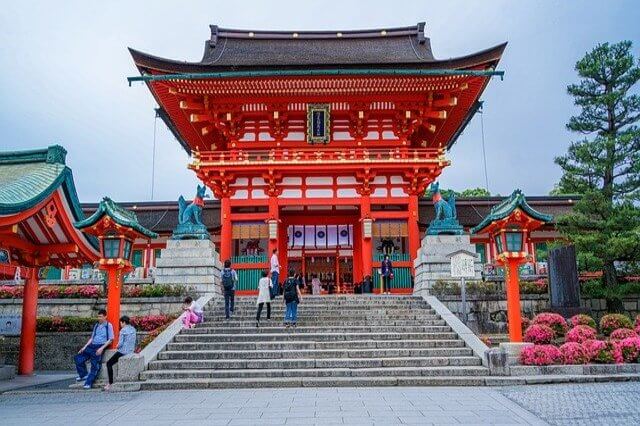
What kind of impression did you have toward the customs in Japan? Some of them might sound wired, but knowing about these differences prior to your visit to Japan will be considerably helpful!
Follow us on Instagram or Facebook for more travel inspiration. Or tag us to get featured!
Happy travelling!
Read more travel tips in Japan



This post may contain some affiliate links. When you click through and make a purchase we may receive some commission, at no extra costs to you
